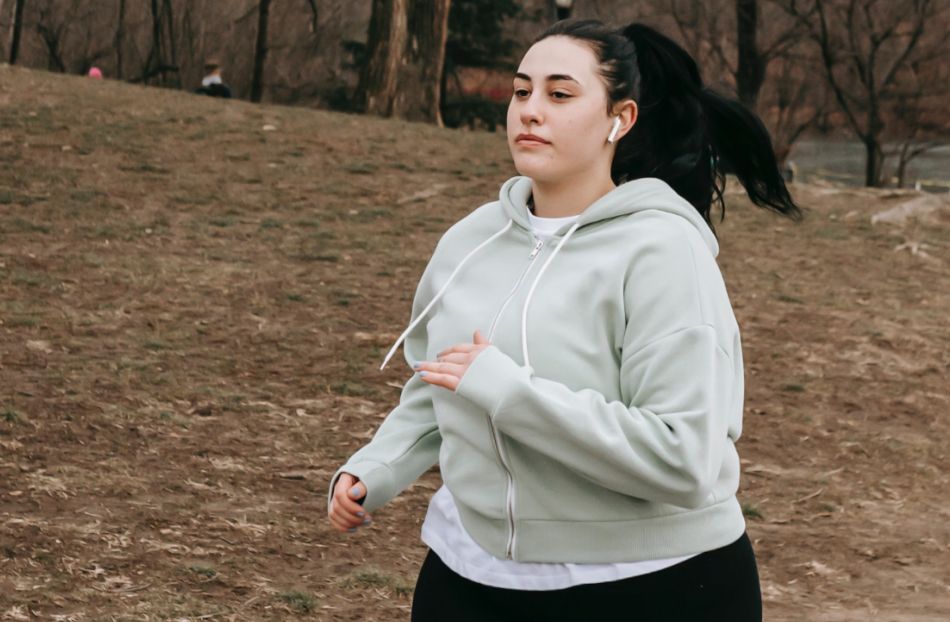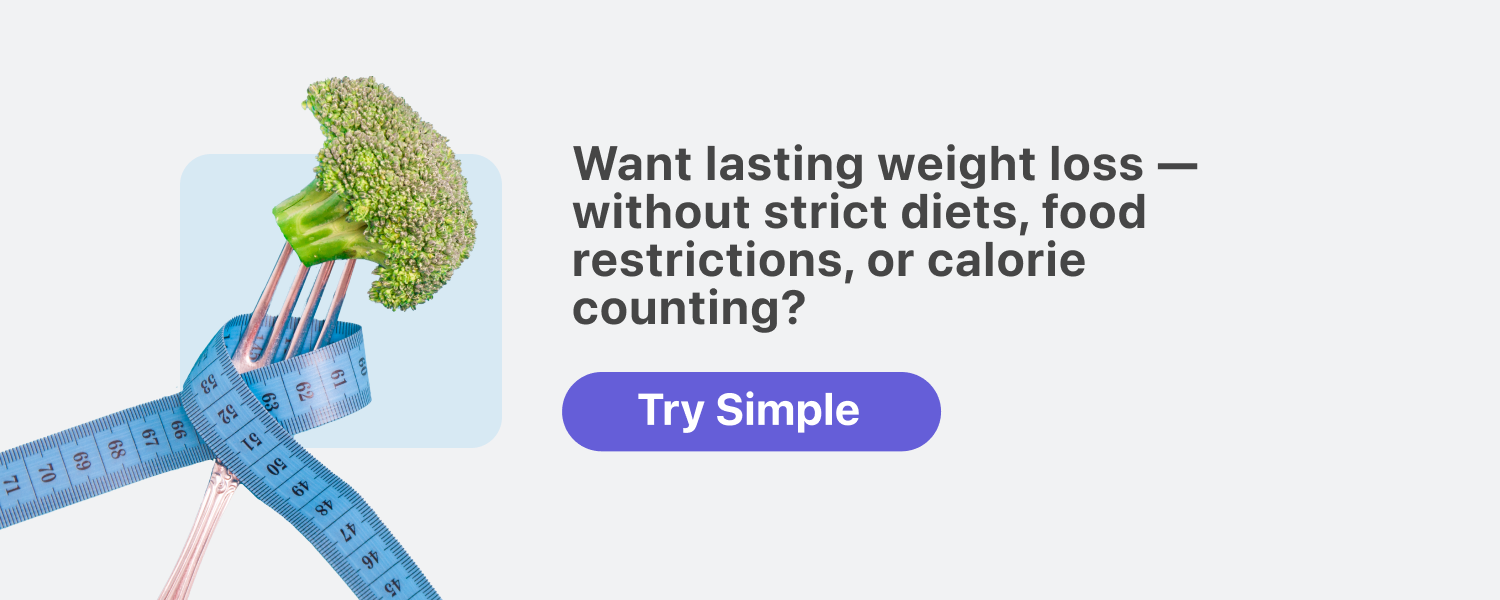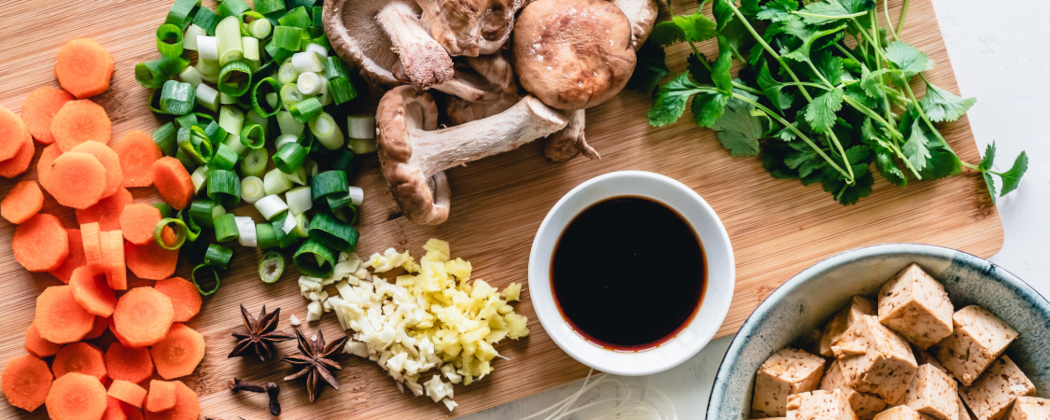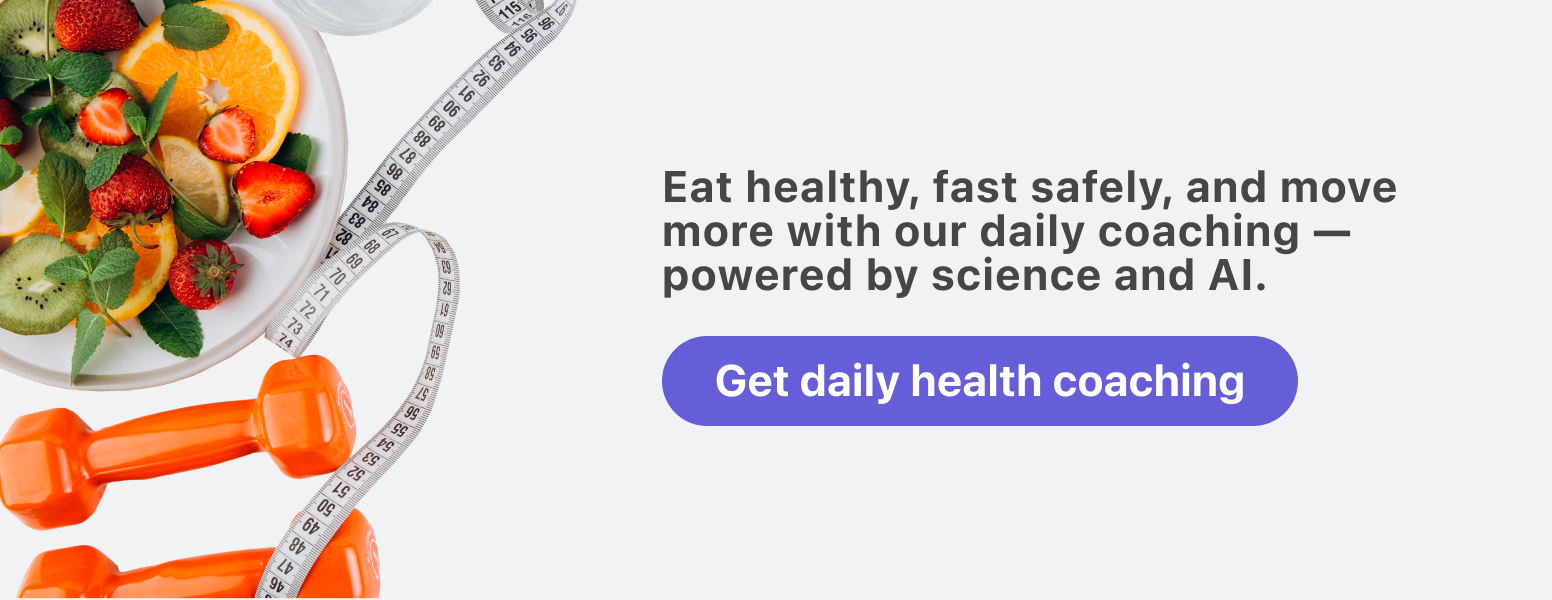How to burn fat effectively

In this world of 30-day abs, Instagram filters, and juice cleanses, there’s a ton of pressure to look a certain way — and to achieve that look as fast as possible — even if it means sacrificing your health and well-being.
Knowing how to burn fat in a smart, sustainable way is quite the challenge.

It’s not something we’re ever taught. There’s no “best way to burn fat” class at school. So we muddle through, trying our best but not really getting anywhere.
We think it’s time to share some simple, trustworthy guidance on how to make your body burn fat safely and effectively so you can have the body you want and stay sane and healthy along the way.

How to start your fat-burning journey
Start off by gathering some initial data. For baseline setting and progress tracking, we recommend:
- front, back, and side photographs
- full body measurements
Ideally, take these once a month. That’s far enough apart to see changes in your body and close enough together to be able to redirect your efforts if things aren’t changing.
Hold on, where are the scales?
No scales needed! Scales track weight loss, and there’s a big difference between fat loss vs. weight loss.
Weight loss comes in different forms: you can lose water, glycogen, fat, or muscle. Weight also fluctuates often due to small day-to-day things like a salty meal or a change in hormone levels, making it a less reliable way to see meaningful changes in your body.
Fat loss, on the other hand, is how we change our body shape and composition in a way that lasts. If you’re itching to see a leaner, more sculpted you in the mirror, it’s fat loss you’re after.
So, set your future self up for success by tracking the right kind of progress.
Fat burning basics

To lose body fat, you need to burn more calories than you eat.
In other words, you need to create a caloric deficit, so your body uses its stored energy — which is stored in the form of fat — to fuel your activity.
Within this, we can leverage:
- What we eat. Not just eating less but eating more of the right things.
- How we move. Not just moving more but moving enough and in the right ways.
- How we rest. Rest, recovery, and sleep have awesome fat-burning potential. (Yes, really!)
We’ll dig into all this a little later.
How long does it take to burn fat?
The generally recognized advice is to aim to drop 0.5%–1% body fat per month, but bodies are not all the same, and they don’t really work in such a straightforward way. It’s also pretty tough (and unnecessary) to get an accurate grasp on your body fat percentage.
So, while we realize this is a frustrating answer, the truth is … it depends.
It won’t be a dramatic, speedy, movie-worthy process, but if you:
- have patience
- are consistent with your actions
- stay connected to your goals
- push yourself to progress regularly
you won’t be worrying about how long it takes to burn fat; you’ll be watching your body change in real time.
The 10 best ways to burn fat
So, what is recommended for fat burning?
Presenting …
… 10 science-backed ways to blitz body fat that are used by real people, just like you, every day.
- Do cardio
Cardiovascular exercise like walking, running, cycling, and rowing can decrease body fat, belly fat, and waist circumference.[1–3]
It burns calories and can reduce hunger and cravings, making that all-important caloric deficit a whole lot easier to get.[4]
To get your cardio ball rolling, aim for:
- 20–60 minutes
- 3–4 days a week
- a mixture of intensities:
- low, like a gentle walk at an easy pace you could keep up for quite some time
- moderate, like a steady bike ride where you’re breathing harder than normal but can still talk reasonably easily
- high, like challenging interval sprints, where you can’t say more than three to five words in a row while doing them
- Strength train
The fastest way to burn fat? Have more muscle on your body.
Because muscle takes more energy to maintain than fat does, having more muscle increases your metabolic rate.[5]
That means you burn more calories at rest, which is precisely why strength training is such an epic fat-burning workout.[6]
Even better, thanks to excess post-exercise oxygen consumption (EPOC), your body continues burning calories at a higher rate than normal for some time after you’re done working out.
To harness the power of strength training, shoot for:
- 3–4 strength training sessions a week (start out with 1–2 if you’re new)
- a variety of movements for the whole body throughout the week
- 2–4 sets of 6–12 reps for most exercises
As you get more comfortable, increase weight, reps, and/or sets. Your body will build more muscle tissue to handle the extra workload and boom! More muscle in the tank!
- Recover well
Recovery is a good friend to fat burning because it keeps you off the fast track to fatigue, burnout, and injury. When you want to use exercise to make fat surrender to your attempts to burn it, the aim of the game is to stay in the game.
To keep yourself firing on all cylinders and working your fat-blasting abilities, embrace active recovery-style activities, like easy walking and stretching, and take at least one day off training to rest — and rest hard — every week.
- Get enough sleep
Speaking of resting hard, sleep is a potent fat burner.
Good sleep keeps your hunger and fullness hormones in tip-top shape, helping you control your appetite and make better food choices.[7] It’s also a recovery powerhouse that directly supports your ability to crush your workouts. Bonus!
Poor sleep, by contrast, can reduce metabolism and increase cravings,[8] potentially increaseing your risk of obesity.[9]
We’re all unique in our sleep needs, but science suggests around seven hours or more a night is ideal as part of your “how to burn body fat” toolkit.[10]
Try creating an end-of-day winddown routine to ease you into dreamland so you can catch more z’s.
Plus, don’t sleep on our app, which is full of resources for improving sleep, managing stress, building better habits, and more. (Did we mention that it’s also a fasting buddy?) Get started today by taking our Simple quiz.
- Eat enough protein
Lots of studies link eating quality protein with lower body fat, and with good reason.[11] A high protein diet helps to:
all of which help when you’re trying to eat less than you burn. (There’s that calorie deficit again.)
Protein also increases your metabolic rate, helping you burn more calories through thermogenesis (the energy your body has to use to break protein down into a usable form), and both builds and preserves muscle.[13,14]
To burn fat fast at home, hop into the kitchen and start adding high-protein foods like chicken, fish, beans, and tofu to your meals.
- Eat better carbs
The idea that eating low or no carbs is The Hallowed Path to fat loss hangs around like a bad smell.
And sure, a low-carb diet can be effective. But it’s not necessarily more effective compared to other diets.[15]
What really matters is the quality of your carbs.
Eating refined carbs can lead to:
On the flip side, diets high in whole grains are linked with smaller waist circumferences, better appetite management, higher energy levels, and better recovery.[18]
See what happens when you swap some pastries, white bread, and breakfast cereals for a little more quinoa, oats, beans, and lentils.
- Eat more fiber
No “how do you burn fat?” article would be complete without this sage wisdom, known to parents the world over:
Eat your vegetables!
But your inner child wants to know, does it really help with fat loss?
It sure does.
Higher fiber intake has been linked to increased weight loss [19] and reduced belly fat,[20] and it works because fiber:
- keeps you full, so you don’t overeat
- keeps your blood sugar balanced, so cravings aren’t constantly knocking at your door
- gives you energy, so you can lift weights, play pickleball, and still have enough juice in the tank to chop some carrots for tomorrow
Choose a few veggies (and other high-fiber foods, like beans, lentils, and fruit) you enjoy and add an extra portion to your meals.

- Eat healthy fats
Just like carbs, somewhere along the way, the mainstream got it twisted about fat. Let’s set the record straight:
Eating fat helps you burn fat.
Not just any old fats, mind you — the healthy kind. Quality, again, is key.
We’d understand completely if you’re thinking, “Yeah right, simple. Just exactly how do I burn fat by eating fat??” so let’s check the science.
The Mediterranean diet, which is rich in healthy fats like olive oil and nuts, often comes up with the goods for long-term weight loss compared with a low-fat diet.[21]
Replacing saturated and trans fats with unsaturated (especially polyunsaturated) fats contributes to the prevention of age-related weight gain.[22]
Healthy fat helps to vanquish body fat because it:
- keeps you fuller for longer
- squashes cravings
- makes food taste better (important for diet stickability)
We’re not suggesting you go wild. Fat is still the most calorific macronutrient, and the overall goal is still to eat less than you burn. Aim to keep your fat intake around 20% to 30% of your daily calories, but also aim to switch out the saturated and trans fats in your diet for the unsaturated kind. Try:
- exchanging coconut oil for olive oil
- swapping margarine for avocado in baking (seriously!)
- upgrading your nut butter
(Need a hand with all these nutrition steps? We can help you learn how to meal plan.)
- Drink more water
One of the simplest fat burners on the block, drinking water, has a lot going for it. It can help you:
- eat less — especially so before a meal [23,24]
- feel fuller longer [25]
- feel less hungry [25]
- drink fewer drinks that stall fat loss, like soda [26]
All of which is undeniably helpful when you’re trying to create a caloric deficit.
It can also increase your resting metabolic rate, so you burn more calories doing nothing (who doesn’t love increased calorie burn when you’re sleeping?).[27]
Try adding a glass of water to the start of your meal.
- Try intermittent fasting
At Simple, we’re big fans of intermittent fasting, which is an approach to nutrition that alternates periods of eating with periods of fasting.
We’ve seen, up close and personal, intermittent fasting’s fat loss effects.[28] It can burn fat with the best of them.[29]
There are lots of intermittent fasting options to choose from like:
These “time-restricted eating” schedules are our favorites at Simple. There are some more restrictive fasting schedules (like the Warrior Diet, alternate-day fasting, and the 5:2 diet), but we don’t recommend fasting schedules where you eat either nothing or a limited amount of calories for 18+ hours. They involve more potential risks and safety concerns, and there isn’t really evidence to suggest they’re more effective results-wise.
If your healthcare team is on board with your decision to try intermittent fasting, we’re pretty good (if we do say so ourselves) at helping smooth out the wrinkles of intermittent fasting for beginners.
If you’re curious, here’s an easy first step: Check out our Simple quiz.

Fat burning myths
You know as well as we do — there’s a lot of garbage advice out there on the internet. Let’s put some of those misleading fat loss myths to bed.
The lower your calories, the better
It seems like it should be true, but cutting calories too low will actually stop you from being able to burn fat because it’ll:
- steal your energy, making it hard to exercise [30]
- spike your cravings, making it harder to make good food choices
- slow your metabolism, making you burn less calories overall [31,32]
- impair your recovery, making you less able to push during workouts
The cheat meal
The much-hyped “cheat meal” is a meal that’s full of foods that you “aren’t supposed” to eat on a fat loss plan.
Here’s the thing: no meal should be a “cheat” meal, because no food is inherently “bad” or “good” — some are just less nutrient-dense and health-promoting than others. Plus, you shouldn’t feel guilty about indulging every now and then. Yes, some research suggests that these indulgences may make us less likely to stick to our plan and more likely to make unhelpful food choices,[33] but a true health-promoting eating routine is one that doesn’t make you miserable.
Rather than seeing a meal as a “cheat,” our suggestion is to cut yourself some slack and give yourself permission to enjoy the occasional indulgence if you need it. You should also build your everyday regular meals around health-promoting foods you actually enjoy so they don’t feel like a forced effort that you have to “cheat” sometimes to maintain sanity.
Eat a little and often
Back in the day, eating a little and often was thought to be the bomb for stoking your metabolism.
But now, research shows that various meal frequencies can be effective.[34]
Fat loss can happen whether you eat once a day or six times a day. Whatever works for you!
Always exercise at low intensities
Here’s the idea:
- Higher-intensity exercise uses more carbs for fuel.
- Lower-intensity exercise — i.e., exercising in the “fat-burning zone” — uses more fat for fuel.
- Therefore, lower intensity exercise is the “Best Fat Burning Exercise” because working out in the “fat-burning zone” must burn more fat.
This argument misses the point that exercising at lower intensities burns less calories overall.
Remember, our fundamental principle here is to burn more than you eat. We need to clock up a decent amount of movement to achieve that, and the best way to do so is a mixture of low, moderate, and high-intensity exercise.
Always exercise at high intensities
Our brains love to find the quickest, most efficient way of doing things, and yes, high-intensity training does burn more calories in less time and is effective for fat loss.[35]
It’s also a great way to get injured and/or burned out — and a super-effective way to learn to dread workouts — if you do too much of it. (Even if you like working out, going full speed every time will eventually create some heavy resistance in your soul.)
Again, mix your intensities for the best results.
7 best fat burning tips
Oh yeah, we’ve got more!
To add to our 10 best ways to burn fat (which are all pretty meaty!), here are some mini tricks and tips you can use to give your fat loss routine that little extra zhuzh.

- If you’re new to exercise, start out with low and moderate intensity
You can definitely burn fat this way, and it really helps with liking exercise, which, if you want to burn more fat, is rather important.
The more you enjoy exercise, the more frequently you’ll do it, and the more fat you’ll burn.
So, start easy and let your friendship with exercise build.
- Use compound movements
A compound movement is one which uses more than one muscle. A squat, for instance, works your quads, glutes, and core. A pushup works your delts, pecs, triceps, and core.
Doing compound movements means you’ll build more muscle and burn more calories per exercise.
Try swapping out single-muscle moves like bicep curls and leg extensions for compound ones like pull-ups and lunges.
- Do more NEAT
NEAT — Non-Exercise Activity Thermogenesis — is the calories you burn doing every activity that isn’t exercise, and it contributes a significant amount to the calories you burn daily.
To burn fat faster, increase your NEAT.
Try the classics like:
- taking the stairs
- parking farther from the entrance
and get creative:
- play with your hamster
- learn to juggle
- paint that fence you’ve been putting off for years
How can you move your body a little more each day?
- Try circuit training
For the best fat-burning results, doing cardio and resistance training is where it’s at.[36]
For an easy win, try circuit training.
Moving from one exercise to the next without rest keeps your heart rate high, while the exercises themselves — usually a mix of pushups, squats, lunges, kettlebell swings, etc. — will work your muscular strength and endurance.
- Try green tea
You could supercharge your results via a Simple cup of green tea.
Green tea is thought to make us more efficient at burning calories thanks to its caffeine and antioxidant content.[37]
Worth a try! Stick to the teabags, though, and skip the green tea supplements, which can be damaging to our kidneys.
- Caffeine with your cardio?
If you’re looking for a fast way to burn fat, caffeine could be your friend.[38]
It stimulates your central nervous system, increases metabolism, and boosts the breakdown of fatty acids. It can also enhance fat burning during aerobic exercise.[39]
If you tolerate coffee well, see if it helps your fat loss efforts.
- Improve your nutrient partitioning
There’s no two ways about it: to get leaner, you need to take actions that burn fat consistently.
But not just for the calorie deficit you’re seeking to create.
Improving the quality of your nutrition and exercising regularly also makes you better at nutrient partitioning, where your body uses more of the food you eat to build muscle rather than storing fat.
Consistency = more muscle and less fat. #Winning!
What burns off the most fat is combining this fat-loss trinity:
- strength training
- cardio
- quality nutrition
But if we had to pick just one thing, we’d choose building muscle. Or quality nutrition. Ack, we can’t choose — they both land in the top spot for fat loss!
You can burn fat naturally by eating, sleeping, and moving just a little better each day.
You already have all the fat-burning mechanisms you need; now’s the time to leverage them.
You do! Your natural metabolism is what burns fat while you sleep.
It may be worthwhile to eat a little protein before bed to help your body repair and recover, or you can fast before bed to take advantage of the fat-loss benefits of intermittent fasting.
Bodies are all different, and results depend on many factors. Yet, how long it takes to lose fat also depends on how much you put into the process.
Give it your best shot, and you should see some noticeable results within a month.
The science tells us that strength exercises and cardio done at varying intensities are the best fat-burning exercises.
You can lift weights, run, swim, do yoga, cycle, swing some kettlebells … They all have the ability to make body fat melt away.
Experiment and see which fat-burning exercises do the trick for you?
We can’t spot reduce (i.e., burn fat from specific body parts on command), but because they use a lot of muscles in one go, compound exercises likely burn most belly (and body) fat.
Try full-body exercises like Turkish get-ups, squat presses, or medicine ball slams.
To burn 1,000 calories a day is a tall order — it could take around 1.5 hours of jumping rope or climbing stairs![41]
We wouldn’t suggest you try it. Instead, work out in a way you enjoy, move around more, eat well, and your calorie burn will naturally build over time.

- Sigal RJ, Alberga AS, Goldfield GS, Prud’homme D, Hadjiyannakis S, Gougeon R, et al. Effects of aerobic training, resistance training, or both on percentage body fat and cardiometabolic risk markers in obese adolescents: the healthy eating aerobic and resistance training in youth randomized clinical trial. JAMA Pediatr. 2014 Nov;168(11):1006–14.
- Alberga AS, Prud’homme D, Kenny GP, Goldfield GS, Hadjiyannakis S, Gougeon R, et al. Effects of aerobic and resistance training on abdominal fat, apolipoproteins and high-sensitivity C-reactive protein in adolescents with obesity: the HEARTY randomized clinical trial. Int J Obes . 2015 Oct;39(10):1494–500.
- Lemes ÍR, Turi-Lynch BC, Cavero-Redondo I, Linares SN, Monteiro HL. Aerobic training reduces blood pressure and waist circumference and increases HDL-c in metabolic syndrome: a systematic review and meta-analysis of randomized controlled trials. J Am Soc Hypertens. 2018 Aug;12(8):580–8.
- Schubert MM, Desbrow B, Sabapathy S, Leveritt M. Acute exercise and subsequent energy intake. A meta-analysis. Appetite. 2013 Apr;63:92–104.
- Westcott WL. Resistance training is medicine: effects of strength training on health. Curr Sports Med Rep. 2012 Jul-Aug;11(4):209–16.
- Wewege MA, Desai I, Honey C, Coorie B, Jones MD, Clifford BK, et al. The Effect of Resistance Training in Healthy Adults on Body Fat Percentage, Fat Mass and Visceral Fat: A Systematic Review and Meta-Analysis. Sports Med. 2022 Feb;52(2):287–300.
- Dashti HS, Scheer FA, Jacques PF, Lamon-Fava S, Ordovás JM. Short sleep duration and dietary intake: epidemiologic evidence, mechanisms, and health implications. Adv Nutr. 2015 Nov;6(6):648–59.
- Capers PL, Fobian AD, Kaiser KA, Borah R, Allison DB. A systematic review and meta-analysis of randomized controlled trials of the impact of sleep duration on adiposity and components of energy balance. Obes Rev. 2015 Sep;16(9):771–82.
- Theorell-Haglöw J, Berglund L, Berne C, Lindberg E. Both habitual short sleepers and long sleepers are at greater risk of obesity: a population-based 10-year follow-up in women. Sleep Med. 2014 Oct;15(10):1204–11.
- Watson NF, Badr MS, Belenky G, Bliwise DL, Buxton OM, Buysse D, et al. Recommended Amount of Sleep for a Healthy Adult: A Joint Consensus Statement of the American Academy of Sleep Medicine and Sleep Research Society. Sleep. 2015 Jun 1;38(6):843–4.
- Simonson M, Boirie Y, Guillet C. Protein, amino acids and obesity treatment. Rev Endocr Metab Disord. 2020 Sep;21(3):341–53.
- Leidy HJ, Clifton PM, Astrup A, Wycherley TP, Westerterp-Plantenga MS, Luscombe-Marsh ND, et al. The role of protein in weight loss and maintenance. Am J Clin Nutr. 2015 Jun;101(6):1320S – 1329S.
- Oliveira CLP, Boulé NG, Sharma AM, Elliott SA, Siervo M, Ghosh S, et al. A high-protein total diet replacement increases energy expenditure and leads to negative fat balance in healthy, normal-weight adults. Am J Clin Nutr. 2021 Feb 2;113(2):476–87.
- Cava E, Yeat NC, Mittendorfer B. Preserving Healthy Muscle during Weight Loss. Adv Nutr. 2017 May;8(3):511–9.
- Chawla S, Tessarolo Silva F, Amaral Medeiros S, Mekary RA, Radenkovic D. The Effect of Low-Fat and Low-Carbohydrate Diets on Weight Loss and Lipid Levels: A Systematic Review and Meta-Analysis. Nutrients [Internet]. 2020 Dec 9;12(12).
- Spadaro PA, Naug HL, DU Toit EF, Donner D, Colson NJ. A refined high carbohydrate diet is associated with changes in the serotonin pathway and visceral obesity. Genet Res . 2015 Dec 28;97:e23.
- Sawicki CM, Lichtenstein AH, Rogers GT, Jacques PF, Ma J, Saltzman E, et al. Comparison of Indices of Carbohydrate Quality and Food Sources of Dietary Fiber on Longitudinal Changes in Waist Circumference in the Framingham Offspring Cohort. Nutrients [Internet]. 2021 Mar 19;13(3).
- McRae MP. Health Benefits of Dietary Whole Grains: An Umbrella Review of Meta-analyses. J Chiropr Med. 2017 Mar;16(1):10–8.
- Miketinas DC, Bray GA, Beyl RA, Ryan DH, Sacks FM, Champagne CM. Fiber Intake Predicts Weight Loss and Dietary Adherence in Adults Consuming Calorie-Restricted Diets: The POUNDS Lost (Preventing Overweight Using Novel Dietary Strategies) Study. J Nutr. 2019 Oct 1;149(10):1742–8.
- Jovanovski E, Mazhar N, Komishon A, Khayyat R, Li D, Blanco Mejia S, et al. Can dietary viscous fiber affect body weight independently of an energy-restrictive diet? A systematic review and meta-analysis of randomized controlled trials. Am J Clin Nutr. 2020 Feb 1;111(2):471–85.
- Mancini JG, Filion KB, Atallah R, Eisenberg MJ. Systematic Review of the Mediterranean Diet for Long-Term Weight Loss. Am J Med. 2016 Apr;129(4):407–15.e4.
- Liu X, Li Y, Tobias DK, Wang DD, Manson JE, Willett WC, et al. Changes in Types of Dietary Fats Influence Long-term Weight Change in US Women and Men. J Nutr. 2018 Nov 1;148(11):1821–9.
- Dennis EA, Dengo AL, Comber DL, Flack KD, Savla J, Davy KP, et al. Water consumption increases weight loss during a hypocaloric diet intervention in middle-aged and older adults. Obesity . 2010 Feb;18(2):300–7.
- Davy BM, Dennis EA, Dengo AL, Wilson KL, Davy KP. Water consumption reduces energy intake at a breakfast meal in obese older adults. J Am Diet Assoc. 2008 Jul;108(7):1236–9.
- Corney RA, Sunderland C, James LJ. Immediate pre-meal water ingestion decreases voluntary food intake in lean young males. Eur J Nutr. 2016 Mar;55(2):815–9.
- Anari R, Amani R, Veissi M. Sugar-sweetened beverages consumption is associated with abdominal obesity risk in diabetic patients. Diabetes Metab Syndr. 2017 Dec;11 Suppl 2:S675–8.
- Boschmann M, Steiniger J, Hille U, Tank J, Adams F, Sharma AM, et al. Water-induced thermogenesis. J Clin Endocrinol Metab. 2003 Dec;88(12):6015–9.
- Tinsley GM, La Bounty PM. Effects of intermittent fasting on body composition and clinical health markers in humans. Nutr Rev. 2015 Oct;73(10):661–74.
- Moro T, Tinsley G, Bianco A, Marcolin G, Pacelli QF, Battaglia G, et al. Effects of eight weeks of time-restricted feeding (16/8) on basal metabolism, maximal strength, body composition, inflammation, and cardiovascular risk factors in resistance-trained males. J Transl Med. 2016 Oct 13;14(1):290.
- Redman LM, Heilbronn LK, Martin CK, de Jonge L, Williamson DA, Delany JP, et al. Metabolic and behavioral compensations in response to caloric restriction: implications for the maintenance of weight loss. PLoS One. 2009 Feb 9;4(2):e4377.
- Gornall J, Villani RG. Short-term changes in body composition and metabolism with severe dieting and resistance exercise. Int J Sport Nutr. 1996 Sep;6(3):285–94.
- Rosenbaum M, Leibel RL. Adaptive thermogenesis in humans. Int J Obes . 2010 Oct;34 Suppl 1(0 1):S47–55.
- Murray SB, Pila E, Mond JM, Mitchison D, Blashill AJ, Sabiston CM, et al. Cheat meals: A benign or ominous variant of binge eating behavior? Appetite. 2018 Nov 1;130:274–8.
- Schoenfeld BJ, Aragon AA, Krieger JW. Effects of meal frequency on weight loss and body composition: a meta-analysis. Nutr Rev. 2015 Feb;73(2):69–82.
- Wewege M, van den Berg R, Ward RE, Keech A. The effects of high-intensity interval training vs. moderate-intensity continuous training on body composition in overweight and obese adults: a systematic review and meta-analysis. Obes Rev. 2017 Jun;18(6):635–46.
- Schroeder EC, Franke WD, Sharp RL, Lee DC. Comparative effectiveness of aerobic, resistance, and combined training on cardiovascular disease risk factors: A randomized controlled trial. PLoS One. 2019 Jan 7;14(1):e0210292.
- Kapoor MP, Sugita M, Fukuzawa Y, Okubo T. Physiological effects of epigallocatechin-3-gallate (EGCG) on energy expenditure for prospective fat oxidation in humans: A systematic review and meta-analysis. J Nutr Biochem. 2017 May;43:1–10.
- Harpaz E, Tamir S, Weinstein A, Weinstein Y. The effect of caffeine on energy balance. J Basic Clin Physiol Pharmacol. 2017 Jan 1;28(1):1–10.
- Collado-Mateo D, Lavín-Pérez AM, Merellano-Navarro E, Coso JD. Effect of Acute Caffeine Intake on the Fat Oxidation Rate during Exercise: A Systematic Review and Meta-Analysis. Nutrients [Internet]. 2020 Nov 24;12(12).
- Miller T, Mull S, Aragon AA, Krieger J, Schoenfeld BJ. Resistance Training Combined With Diet Decreases Body Fat While Preserving Lean Mass Independent of Resting Metabolic Rate: A Randomized Trial. Int J Sport Nutr Exerc Metab. 2018 Jan 1;28(1):46–54.
- Calories burned in 30 minutes of leisure and routine activities [Internet]. Harvard Health. 2021.
